by Romina Ciulli e Carole Dazzi
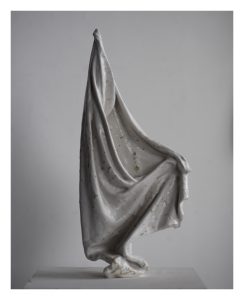
The work of the English artist Darren Harvey-Regan returns a photographic imagery in which the simplicity of the material underlies a complexity of meaning and vice versa. In fact, his works create a connection between the represented subject, the photographic representation of the object and the exhibited photograph itself. This relationship generates an aesthetic tension that takes possession of photography and sculpture to deepen the themes of his artistic research.
The photographic material thus becomes the starting point for analyzing the different perspectives of meaning that can be established between a concrete entity and its image, through a continuous reference to abstraction and reality. So, the dialectical encounter between these two mediums gives rise to a physical and conceptual space where nothing can be defined, but everything can add meaning to meaning. Let’s talk with the artist.
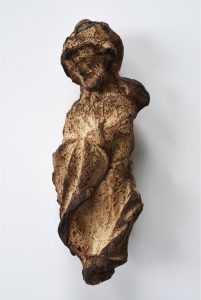
Your work starts from a continuous passage between sculpture and photography: a perpetual dialogue between the three-dimensional, corporeal material object and its representation. In this creative process, the matter is constantly transformed, enriching itself with new meanings, while always remaining the same. Can you tell us how your projects come about? And what is the role played by photography and sculpture in the elaboration of your works?
For a long time Photography was my primary language. So I tended to think of it first and ask how other mediums and ideas can relate to it, or be comparatively expressed through it. Sculptural works might develop for example, from thinking about photography’s typical characteristics, and how they differ from or align with those of sculpture.
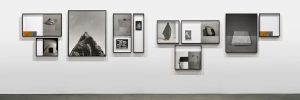
My work Metalepsis was actually inspired by literary ideas, asking how figurative language might find an equivalent in photography. Much of my work is sculptural in process, and photographic in the end result. Many pieces have recreated photographic tropes in real life, such as the cut tools that look like photomontage, or the painted vase that looks like Photoshop’s empty checkerboard space. The fact that photography has the ability to create objects makes objects themselves a fascinating subject matter. Unlike living things, effects or views, objects perhaps retain the most of themselves in photographic translation. Or at least they typically appear close enough to the way we see them in real life: the eye and the lens are not so dissimilar. So for me photographs of/with/ as objects creates an intriguing context, offering the most overlap with the world as it is and the world as photography makes it. It is where photography’s reciprocal relationship is at its most acute.
Your works feature pure forms and natural materials. The few elements and simple objects do not saturate the viewer’s vision, but on the contrary they seem to allude to something that is missing. In fact, in your works there is the sensation of looking into a space from which something has been stolen, an intriguing absence that underlies a deeper story hidden behind what we observe. Can you tell us something more about the way you conceive the composition of the image? Does this “other” dimension that you seem to suggest really exist?
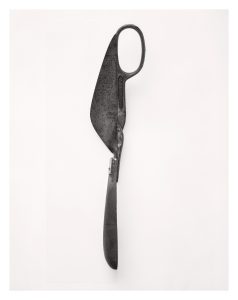
That’s a fascinating and insightful question. First off, compositionally I find myself usually doing my best to erase the obvious presence of the camera. By that I mean photographing in sharp focus, head-on, without any obvious typical photographic techniques. In this way I get as close to our vision as possible, which then makes the more subtle differences, the forced-perspectives, the monochrome, added drawing, alteration of original objects, material changes and shifts, etc., the payoff for a closer, slower and considered looking. In that sense there’s this slippage between initial appearances and the reality, what appears to be shown and what is shown. I’m fascinated by your phrasing that together the works seem to allude to something missing, ‘an intriguing absence’. I think of Morandi’s (often mangled) quote, since it refers to the deeper story–as you put it–of appearance, perspective, and interpretation: ‘nothing can be more abstract, more unreal, than what we actually see. We know that all we can see of the objective world, as human beings, never really exists as we see and understand it. Matter exists, of course, but has no intrinsic meaning of its own, such as the meanings that we attach to it.’ (Dialogues, p106).
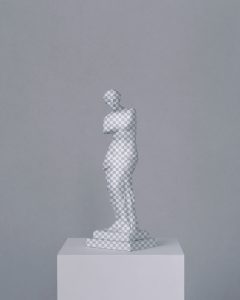
Photography is a medium that looks, that shows us looking. And therefore always asks who is looking, and from what perspective. My MA work considered the animal as a site of human projection. There being nothing we can essentially know of the animal’s own way of being, its own understanding of itself and the world in relation to that self. So perhaps that deeper thing is the mystery of what lies behind our own interpretations, our human looking. This ‘other’ dimension certainly exists, but, as Morandi says, we have no means of accessing it. And yet to reflect on that is a way of challenging our viewpoints on anything, to hold our perspectives lightly.
On the other hand Metalepsis is a work conceived as an installation made up of frames, images and materials which, through a silent dialogue, seem to show us a story which remains suspended, fragmented into many dots that the viewer has to connect. You defined it as an “accumulation of echoes.. like a type of poetic verse, a visual syntax where images, materials and frames quote, introduce, encounter and re-quote each other..”. What was the source of inspiration for this work? What is resonating in these images?
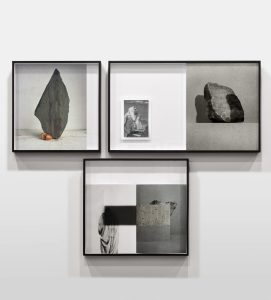
The source was trying to let go of the conceptual specifics of a work, and allowing for a more subjective sense of connection and ambiguity to connect pieces. Having completed an exhibition where the all works had quite tight readings, as the cut tools, checkerboard paintings, etc., I was staring at the wall of visual rabbit trails and experiments I’d worked under in the studio that past year wondering what was next. There were so many visual echoes between those ideas, so many connections clearly there. Yet they were hard to pinpoint in language. While they seemed looser and ambiguous to me, they still felt just as pertinent, just as valid an expression of the research and ideas I’d been following. I have often made parallels between my working process and language. And here began to ask myself what a purely visual metaphor might look like? How is a simile expressed through photography.
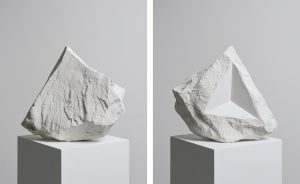
Metalepsis is a literary term describing the figurative use of figurative language, like a layering of metaphors. Keeping the sense of connection between images made during a similar time, though not initially to belong together, these loose groupings gradually became a single installation where image, content, material, form, frame, scale, colour all became like words, arranged poetically to quote and re-quote each other, to speak literally and figuratively of each other. This also allowed for a personal narrative to creep in as one such layer, content relating to my own christian upbringing and eventual rejection of the faith, imagery that I’d never been entirely able to justify outside of the whole, but now, years later, has begun to dominate work.
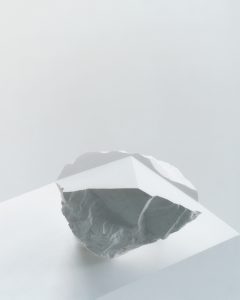
Let’s talk about the cycles of works The Erratics (exposure) and The Erratics (wrest). In the first photographic nucleus there are rock formations eroded by the wind and desert sand. Instead in the second, there are photographs representing the sculptures you made with plaster boulders collected on the English coast. The term Erratics refers to the rocks transported to the valley floor by a glacier which are found, once the ice has melted, to be far from their original place, in a new and unusual position. Thus here is the reference to the theme of displacement, to wandering towards a foreign destination and to the change that produces the different position of a body in space. What are the motivations behind this project?
Your phrasing of the question here has led me for the first time to consider myself as the potential erratic! I like it. I have a variety of responses to the origins of this project, mostly art-related. But if I stick with this more personal trajectory, then I was experiencing creative deadlock. Having worked myself into a corner through the restraints of my self, imposed style I was stuck shooting isolated minimalist objects in my London studio. I had become conceptually trapped by the idea of subject of what exactly to photograph. The world itself seemed too rich, everything came with a matrix of associations and contexts. And in trying to speak with photography and of photography, I didn’t want all those other associations and couldn’t see how to escape them.
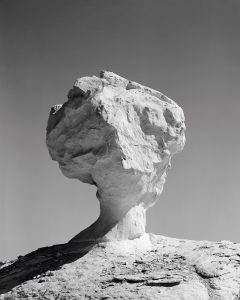
At this stage, I read Wilhelm Worringer’s essay ‘Abstraction and Empathy’ and it struck something in me profoundly. He was writing just before the tipping point of cubism, and in response to a lot of indigenous craft and dress that was becoming more culturally circulated. The general sense being that as fascinating as the work was in its abstracted forms and patterns. It was the result of primitive people who didn’t have the ability to paint, draw or sculpt realistically in the manner western art valued. He disputed such claims and proposed these works never aimed for realism, but rather derived from an entirely different intent. Worringer proposed a spectrum of artistic intent from empathy to abstraction: empathy being enriching oneself through the experience of identification and depiction of the world as it is, as it is found in itself. Abstraction he suggested, saw the world as threatening, too chaotic, and strove to reduce it to more manageable forms. I saw in this entire spectrum of intent not only a way of thinking about photography in its relationship to the world, but a description of my own fears and desires, this longing to be immersed in the world but this state of having become abstracted from it. At that particular point I had become involved in an architectural project and was trying to abstract some of its raw materials into compositions. The build was clad in chalk.
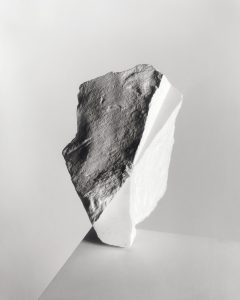
In my research, I stumbled across images of the White Desert in Egypt– great chalk monoliths rising out of the sand–and was captivated. The essay and the possibility it awakened connected to this place, and within a couple of weeks I was there. It was perhaps the most irrational and spontaneous thing I have ever done! So essentially I went to the White Desert to photograph the huge chalk pillars, the remains of an ocean sea bed now eroded into toppling forms by the sand and wind. And, in all honesty, I had no idea what I would do with the images. This was purely about breaking my own creative deadlock, allowing myself the freedom to do something I had not done for years, take a camera out into nature. And the images I brought back, like erratics, relocated to another place literally and conceptually, eventually became the catalyst for the chalk carvings of my own.
What are your future projects?
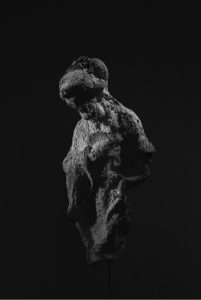
My most recent body of work addressed more head on the strands of personal narrative I mentioned. I became interested in the idea of an iconography for unbelief, that is, having actively chosen against christianity, a conscious exchange of belief for unbelief. I was watching Martin Scorseses’s Silence and the scene where a new convert received the crucifix suddenly struck me as this exchange, this receiving and inheriting an iconography, of being brought into a visual language. I asked how that might work, what essentially that might look like to me, as someone specifically choosing unbelief. An imagery that was borne from a movement away from christianity, but still had recourse to the forms of it. Within ideas around faith there’s a lot of continuity with my work. The world being other than it appears to us.
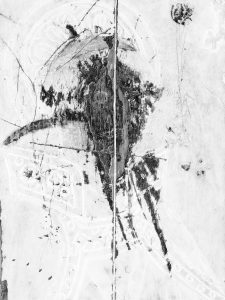
A way of looking and seeing that questions received appearances and interpretations as well as the construction of perspectives and narratives. Within iconography you have the idea of the prototype, the original source from which an icon draws. And of course you have the idea of Christ as the image of god, the image that historically,in the west, validated the very possibility of imagery itself. Christianity is the foundation for all our western art and theory and, in terms of time, we’re really not that far out of a total immersion in it. It’s a difficult area to make work about, and I can’t say it’s proven easy. Currently I’m working on sculptures that began as a photographic process but seem, for the time being at least, to have left their photo origins behind. Photography is a fascinating medium but also one that tends towards narcissism, forever talking about itself and to its own practitioners. So I guess currently it has become my own original source point, but the work has evolved some distance beyond it, to the point where I wonder how strained the ties have become.